 |
| U.S.S. Rising NCC-71701 Heavy Cruiser The U.S.S. Rising is one of a new line of Heavy Cruisers, related in design to both the Galaxy Class and the Soveriegn Class. The Phoenix Class is a large, but streamlined cruiser, specifically created for sector patrol and if needed, planetary defense. She is armored with new ablative technologies and the best in energy recycling shielding. Twelve regenerating phaser emitters, and four quantum torpedo launchers provide defensive and offensive muscle. New nacelle designs improve warp engagement speed and need less regular maintenance than previous models. Bioneural gel packs, and a rudimentary and limited AI system aid speed in response to attacks. Advanced sensor systems can penetrate most scattering technologies, and while unable to penetrate a cloaking system like an advanced Romulan cloak, can detect the residual particles expelled by such a cloak. The following images were recorded during the discovery and attack of an invading lifeform emerging from a previously undefined subspace anamoly. The U.S.S. Rising was able to fend off the parasitic lifeforms and close the anamoly, with a combination of advanced deflector technology and quantum torpedos. THIS MODEL IS NOT AVAILABLE FOR SALE. SEE THE CONTACT PAGE FOR INFORMATION ON PURCHASING ONE OF MY OTHER CREATIONS. |
|||||||||||||||||||||
 |
|||||||||||||||||||||
 |
|||||||||||||||||||||
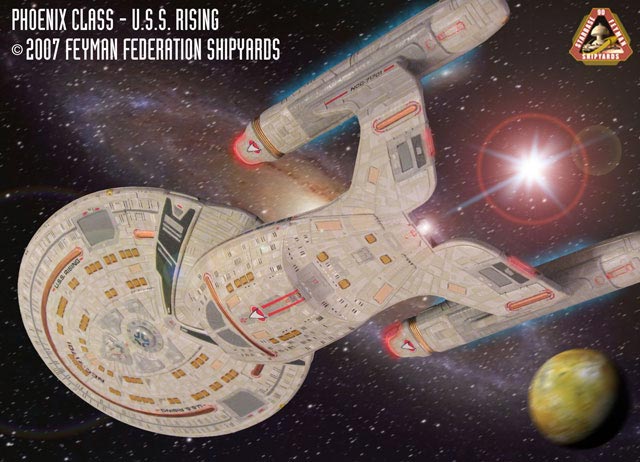 |
|||||||||||||||||||||
 |
|||||||||||||||||||||
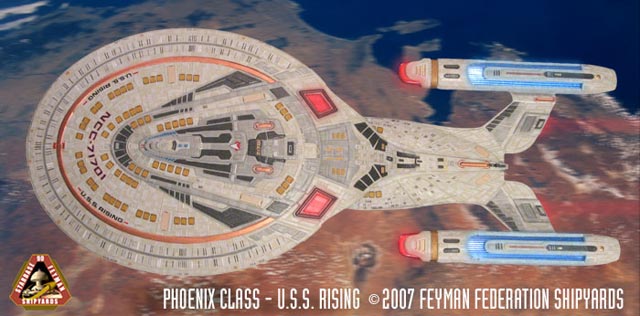 |
|||||||||||||||||||||
 |
|||||||||||||||||||||
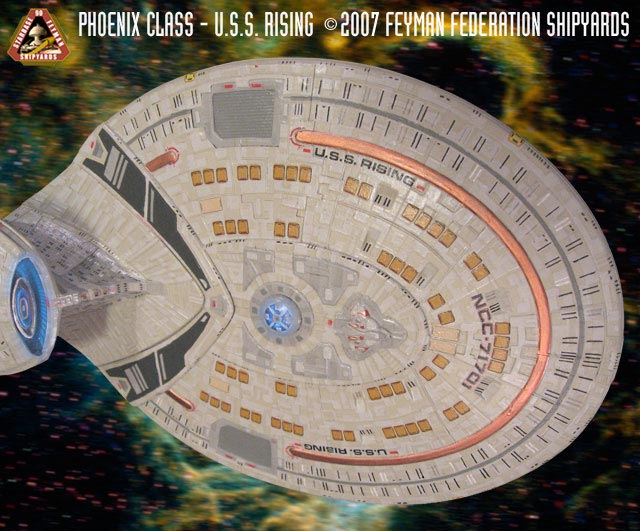 |
|||||||||||||||||||||
 |
|||||||||||||||||||||
 |
|||||||||||||||||||||
 |
|||||||||||||||||||||
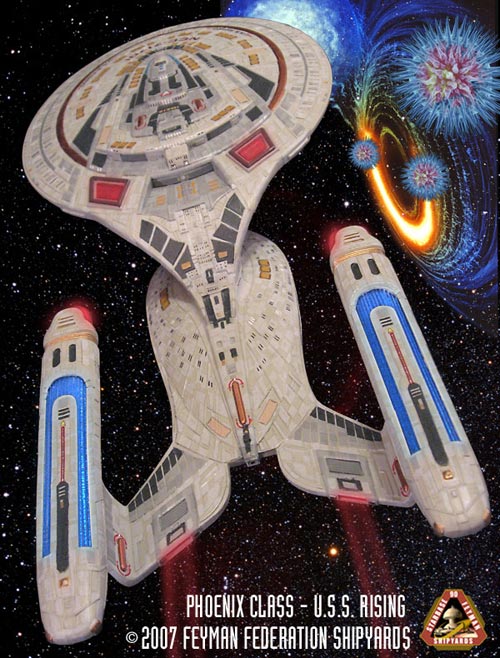 |
|||||||||||||||||||||
 |
|||||||||||||||||||||
 |
|||||||||||||||||||||
 |
|||||||||||||||||||||
 |
|||||||||||||||||||||
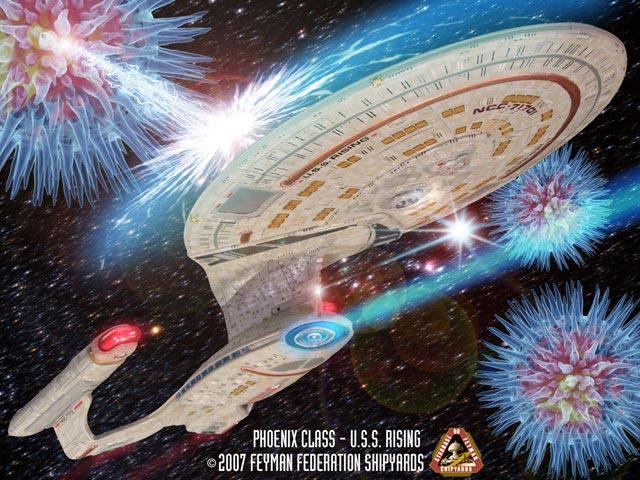 |
|||||||||||||||||||||
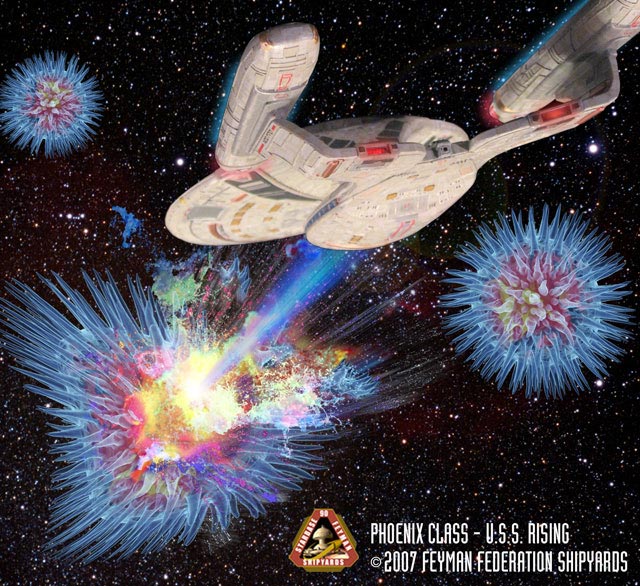 |
|||||||||||||||||||||
 |
|||||||||||||||||||||
 |
|||||||||||||||||||||
 |
|||||||||||||||||||||
| Model Details: This kit was inspired by a beautiful ship designed by Dak Pheonix, the U.S.S. Allegience. See his creation at his site - http://www.phoenixium.com/. This ship was bashed heavily from a Galaxy class kit. The command disc was made from two bottom halves, quartered and rearranged. The engineering hull was modified to make it more narrow (as was the deflector dish) and the struts were scratch built. The nacelles were cannibalized from an older kitbash, and are make from four "C" nacelles. Two nacelles were fused into one to create a longer, leaner nacelle, and then were further modified to create the upper plasma grills. |
|||||||||||||||||||||